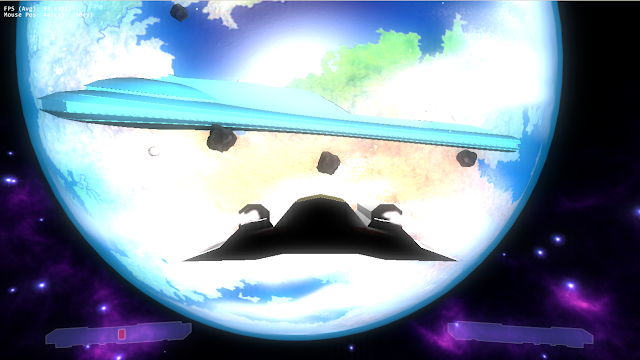So we need a trailer for our game, right? We have a space game. I spent about 2 days working on the battle scene of the trailer. To give you an idea of the work I've put in here's a picture.
Look at all of those ships! There's so many blue fighters and so few red fighters. They're so outnumbered!! I guess you HAVE to help them by playing Quantum Prime and becoming the best pilot on the team. It would be hard to beat the pilot of Hram 4 though. Look at that crazy near miss!! OhEmGeeeee!!
To be fair, I only animated perhaps 90 frames for each ship. But there are lots and lots of ships to animate. I felt like I was playing an RTS. Some ships unexpected, ended up flying better than others. One was even a little slow taking off from the blue mother ship. The guy flying that Stingray (the blue team ship) must have been a rookie, or a droid with some bugs or faulty wiring.
Also, metal ray makes everything look nice
Look at those reflections! I'm a little sad my shaders never looked so good (or that I never got cube mapping working. But I want to someday).
And Lucas' mother ships look pretty all lit-up.
It's weird not coding for two days, especially during crunch. It's even a little frustrating. But I guess there isn't THAT much left to code. We need to integrate a few things and add a couple of things, maybe even tweak the AI. And on top of that we have assignments like the website and postmortem.
I feel like this semester has been the hardest so far. I feel like I've been saying this every semester, but this is the hardest I've worked in my life! I just hope it pays off in the end. I guess at least Dr. Nacke liked our game the other day. I was surprised because I thought other peoples' games were better.
It might just be a matter of taste, or because I've see how horrible our code has gotten over the past week or two. Or maybe it's just because of the sweat and tears I've put into this game.
Anyways, I think I should sleep. There's so much left to do!














